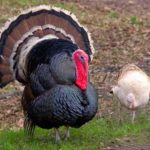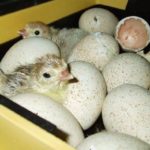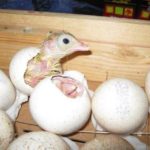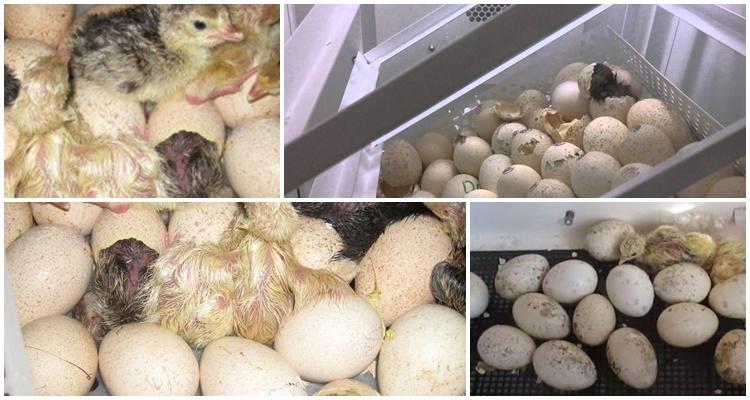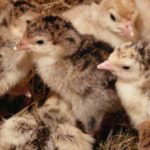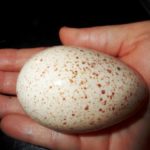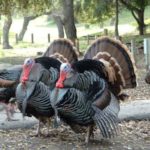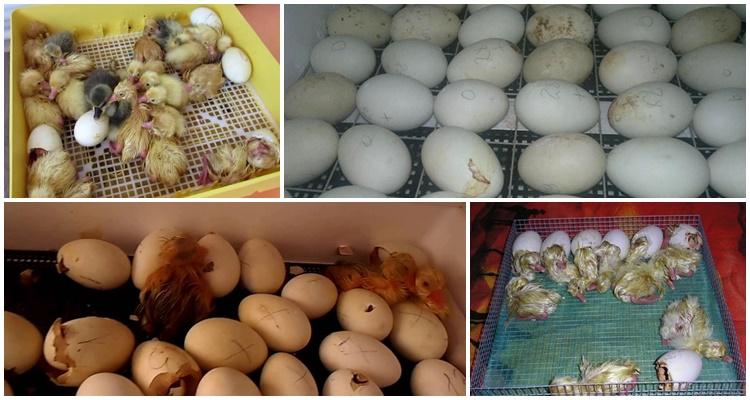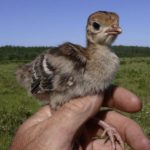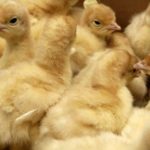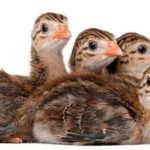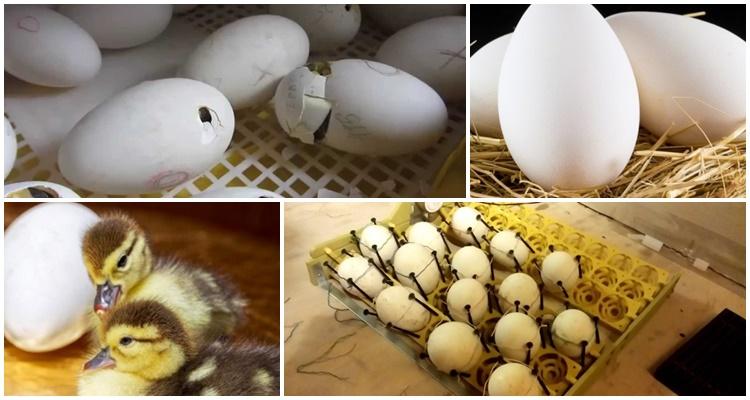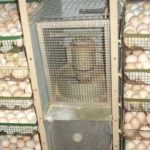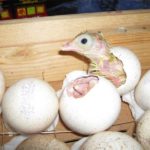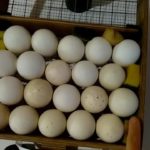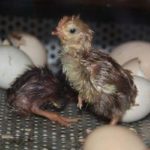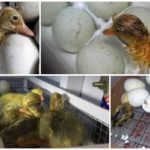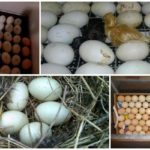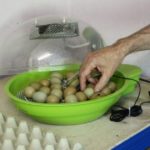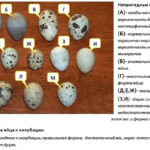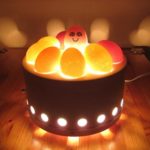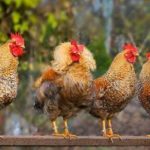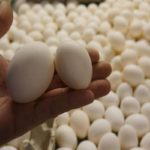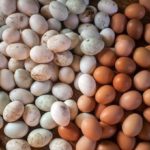Breeding domestic turkeys justifies the cost in a short time. This is due to the fact that poultry is able to quickly gain weight, produce up to 80 percent of the meat yield after slaughter and does not require special housing conditions. At home, as well as on an industrial scale, turkeys are bred using targeted incubation. The breeding mechanism makes it possible to make an accurate forecast of the future livestock with a high degree of probability.
- Advantages and disadvantages
- How to choose a bird breed for incubation
- Features of incubators for hatching turkey poults
- Preparing eggs and storing them
- Preparing the incubator
- Laying eggs
- Stages of embryo development
- Candling at different stages at home
- Table of modes for the entire incubation period
- Timing and features of the process
- Hatching and subsequent care of turkey poults
- Possible beginner mistakes
- Co-incubation with chicken eggs
Advantages and disadvantages
Despite the fact that turkeys have a tendency to hatch, in many cases breeders prefer to use incubators. This gives good results and eliminates unexpected developments.
There are pros and cons to incubating turkeys.
Reference! A universal breed for placing in an incubator is the hybrid converter breed.
How to choose a bird breed for incubation
Beginning farmers are faced with the problem of choosing a breed that is suitable for stocking. In many cases, breeders need turkeys that are categorized as a specific line, such as meat, egg or meat. To choose a breed, you need to focus on the main characteristics of universal species:
- North Caucasian bronze. Individuals with average, but stable, productivity indicators. Females reach 8 kilograms, males weigh about 15 kilograms. A turkey produces up to 80 eggs.
- Wide-chested bronze. Weight ranges from 10 to 12 kilograms. Turkeys lay up to 100 eggs annually. The breed belongs to the meat line; individuals are taken to slaughter when they reach 6 months of age.
- Station wagons.You can get up to 80 eggs from them annually; they are distinguished and valued for their rapid gain of body weight; when slaughtered, they yield up to 80 percent of the meat of the total mass.
- White Moscow. The breed is highly productive. The weight of turkeys reaches 16 kilograms, the weight of turkeys is 8 kilograms. Females produce 80 eggs annually.
Attention! In addition to the characteristics of the breed, breeders recommend paying attention to the health status of the selected turkey.
Features of incubators for hatching turkey poults
Poultry hatching devices are divided by type of operation:
- Type of heating. Devices with an upper type of heating suggest maximum proximity to natural conditions. Bottom heating involves supplying air from below; this type of device allows you to reduce energy costs.
- Turning eggs. Uneven heating leads to loss of livestock, so eggs are turned over during incubation. Devices with a mechanical revolution activate the mode after pressing a button or lever. Automatic incubators are designed so that the revolution occurs at certain intervals, without the participation of a controller. Devices that require manual turning are equipped with special holes, with the help of which you can carry out turnings without losing heat and humidity inside the device.
- Volume of production. According to this criterion, incubators are divided into industrial, farm and home.
Preparing eggs and storing them
Eggs are selected based on the position of the yolk inside the shell. A good option for checking the viability of the embryo is ovoscopy. When candling, the yolk should be in the center of the egg. If you turn it over, the yolk will move from the center position and then return back.If the capillary system is disrupted, bloody inclusions will be visible during transillumination; such specimens must be rejected.
Specially selected eggs are used for laying. Rules for preparing hatching eggs:
- during the day before laying, the material is heated to room temperature;
- dirt from the surface is cleaned with a solution of manganese or peroxide;
- The eggs are additionally marked so that in the future it is clear which egg is upside down and which is not.
At the same time, as many eggs as fit into the compartment are placed in the incubator. Damaged, cracked and soft eggs are subject to rejection.
Attention! Turkey eggs have a strong shell, which allows up to 90 percent of the chicks to be hatched.
Preparing the incubator
The incubator is prepared in advance. 1 day before laying, the device is thoroughly washed and disinfected with special means. Then fill the container intended for this purpose with clean water. 12 hours before laying, the apparatus is warmed up to 38-38.4 degrees. In this case, the humidity indicator should show a level of 60-65 percent.
Laying eggs
Prepared eggs are placed in an incubator depending on the type of machine. This helps to hatch the maximum number of chicks. For the automatic type of machine, a vertical type tab is provided. The sharp end of the egg should point down. When turning mechanically or manually, the material is laid horizontally.
Stages of embryo development
Farm owners are advised to familiarize themselves with the stages of embryo development in advance in order to have an idea of what processes occur inside the incubator at different stages of the brooding process.
| Period | Description of the stage |
| First week | Formation of the circulatory system. During this period, it is especially important to timely turn the eggs. |
| Second week | Respiratory design |
| Third week | Formation of paws and beak |
| From day 25 | Hardening of the beak |
Candling at different stages at home
Transillumination helps to promptly reject non-viable specimens. At the initial stage of the second stage, the first culling is carried out. When a living embryo is transilluminated, a light spot can be seen; a dead embryo is distinguished by a dark spot. The third week suggests that at this time the outline of the embryo becomes clear. During the last stage, movements inside the egg are visible when canned. If no movements are observed, this indicates the death of the embryo.
Table of modes for the entire incubation period
During incubation, it is important to observe temperature and humidity indicators. After mating, the turkey lays an egg and stores it at a temperature of at least 38 degrees. The same conditions must be ensured during incubation.
Table:
| Stage | Temperature | Humidity |
| 1 | 38-38,3 | 65 |
| 2 | 37,7-38 | 40-45 |
| 3 | 37,5-38 | 60-65 |
| 4 | not lower than 37 | 65-70 |
The first days of incubation require maintaining elevated temperatures. This is due to the fact that the embryo must be activated, “push” it towards growth and development. Once the process starts, no elevated temperature is required; the embryo begins to develop naturally, receiving the necessary vitamins and minerals inside the shell. At this time, ventilation becomes an important step. This is due to the development of the respiratory system and the need to obtain oxygen.
After the start of pecking, the air temperature is artificially reduced so that the chick gradually gets used to the conditions in which it will have to adapt. The increase in humidity during this period is associated with preventing drying out.
Timing and features of the process
The incubation process takes 28-32 days. The first pecks appear on the shell 25-27 days after laying. Once the eggs begin to peck, they stop turning them over. To ensure uniform appearance, the air temperature is increased to the maximum permissible level for the period and maximum oxygen supply is ensured. Then the air temperature is gradually reduced.
The chick hatches in 10 hours. There are cases where this requires 20 hours. During the first 10 hours there is no help for the turkey; he must peck through the shell on his own. If it is difficult for the chick to break through the shell after 20 hours, they are helped to do this in any convenient way. The turkey is then left in place to dry completely. After complete drying, the turkey poults are transferred to specially prepared boxes with additional lighting.
Hatching and subsequent care of turkey poults
Once hatched turkey poults require careful care. For 9 weeks, the chicks are kept at elevated air temperatures with additional lighting and adequate feeding. Chicks are taught to eat and drink, this is done in different ways. For example, boiled white and yolk are crumbled on top of the chicks so that they reflexively open their beaks and grab food. Drink is given to each chick by dipping its beak into a bowl of water. Feeding for turkey poults includes the following items: cottage cheese, boiled eggs, millet, corn grits.After day 10, nettle and dandelion leaves are added to the food. After day 14, boiled meat offal is added to the diet.
Information! Dandelion and nettle are chopped with a knife to be introduced into the diet.
Possible beginner mistakes
During incubation, mistakes can be made that lead to the death of the embryos. Typical errors relate to setting temperature and humidity modes.
Excessive heating of the material provokes the death of the embryos or the hatching of insufficiently developed chicks. Excessive heating is indicated by early pipping and an uneven process that lasts for several days. Insufficient warming leads to chicks hatching later than expected. Such turkey poults have weak, almost immobile limbs, and it is difficult for them to adapt to the conditions of detention. Many chicks die within a few days.
A way to prevent these problems is to carefully monitor temperature and humidity levels, as well as purchase modern incubation devices with automatic control functions.
Co-incubation with chicken eggs
When breeding at home, farmers often lay eggs from different birds together: ducks, chickens, turkeys. In this case, the bookmark is carried out in stages. At incubation of turkey poults and chickens take into account the timing of withdrawal.
The average incubation period for chickens is 21-23 days, and for turkeys it is 28-30 days. This means that chicken eggs are laid 5-7 days after turkey eggs are laid. Experienced breeders advise transferring the eggs to another incubator 2 days before the chicks are expected to hatch.

